About a month ago, I started considering putting an aquarium in my house. We had a 55-gallon fish tank about 15 years ago, and I thought that would be a good size again. Unfortunately, we have no room for a tank that size in the house. The best I could do was a 29-gallon fish tank. There was barely enough room for that on a cabinet in the dining room. Our cats like to lie on that cabinet and look out the window, so I would have to take that away from them.
I didn’t want a typical fish tank. I wanted something as close to nature as possible, so I did a fair amount of research. I discovered something called the Walstad method, also known as a dirted aquarium. Diana Walstad wrote a book called Ecology of the Planted Aquarium, which I bought. I found it written more like a scientific journal with much more information than I cared about. Instead, I went to YouTube and learned from people using the method. Most of the videos I watched were similar, but everyone had a slightly different method or list of ingredients.
Last Friday, I was in Petsmart and saw they had a 29-gallon aquarium kit on sale for $120, down from $150. I decided to look online when I got home and found the same aquarium kit on the Petsmart website for $75, so I bought it and arranged to pick it up in the store the next day.
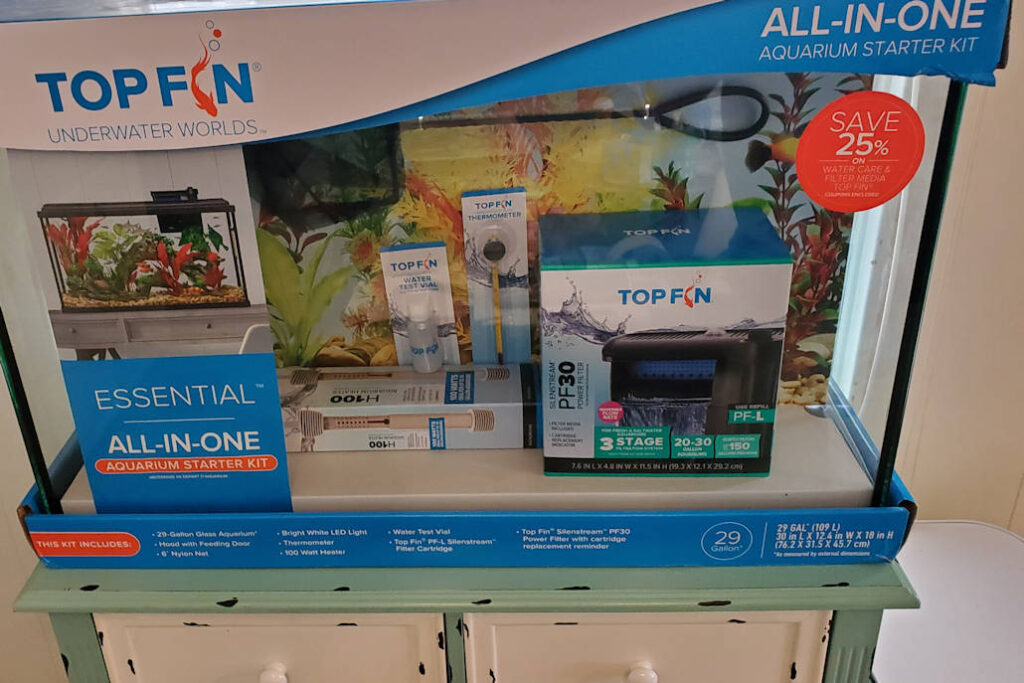
The Walstad method requires a layer of soil topped by a layer of sand. The consensus is about one inch of dirt topped by two inches of sand. Some people only use organic topsoil, while others have a recipe of a half dozen things to supplement the soil, including peat moss, compost, manure, epson salt, bone meal, iron oxide, and diatomaceous earth. The substrate, meaning the sand and soil, should eventually be self-sustained, but that could take a year or more, so the additives help until a balance is reached.
A symbiotic relationship should exist between the plants, fish, and all the microorganisms in the tank. I don’t know the exact process, but the microorganisms break down fish waste and dead plants and convert it to plant food. The plants then help remove ammonia and nitrates and provide oxygen for the fish. I’m sure many other things are going on as well.
I went to Home Depot before picking up the fish tank. I compromised because I could not find most of what I was looking for. I bought topsoil that contained peat moss. I also bought a combination of manure and organic compost. I finished by picking up a bag of play sand and a bucket.
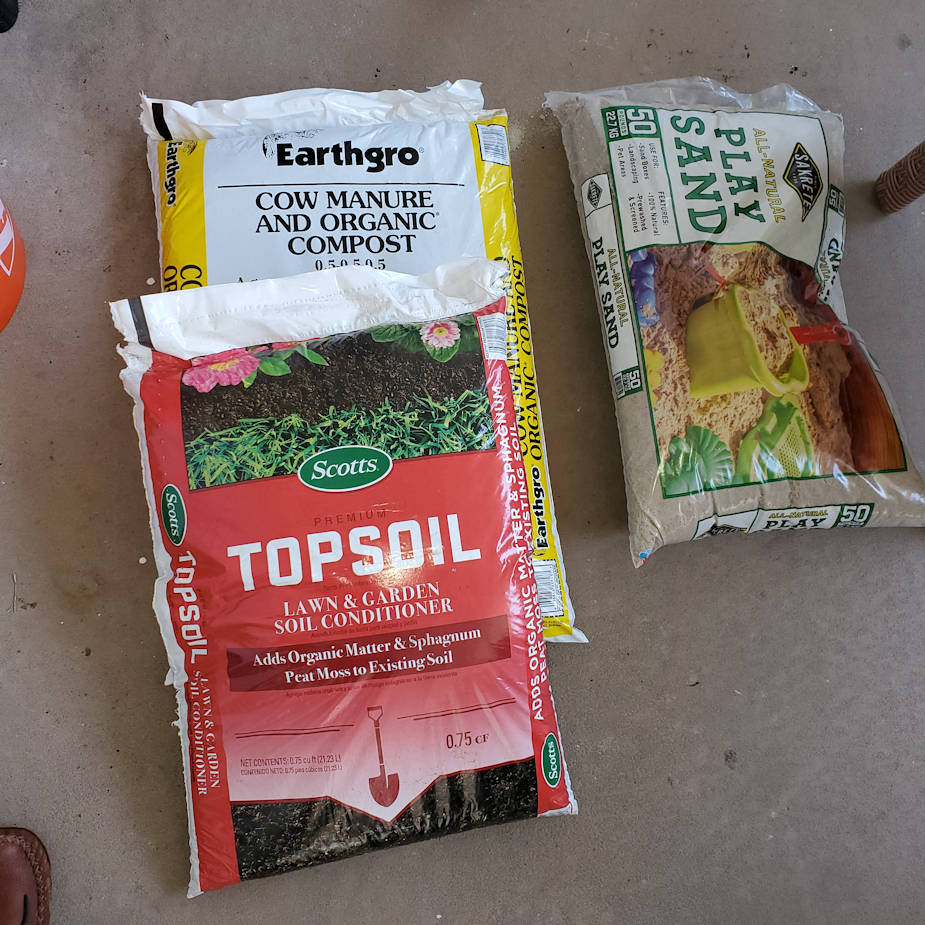
I had epson salt and diatomaceous earth at home and decided to skip what I couldn’t find.
I mixed three-quarters of topsoil and one-quarter of compost/manure in a 5-gallon bucket. I added a small amount of epson salt and diatomaceous earth to the mixture. I then added about one inch of it to the tank. I had a spray bottle filled with water and sprayed the dirt until it was soaked.
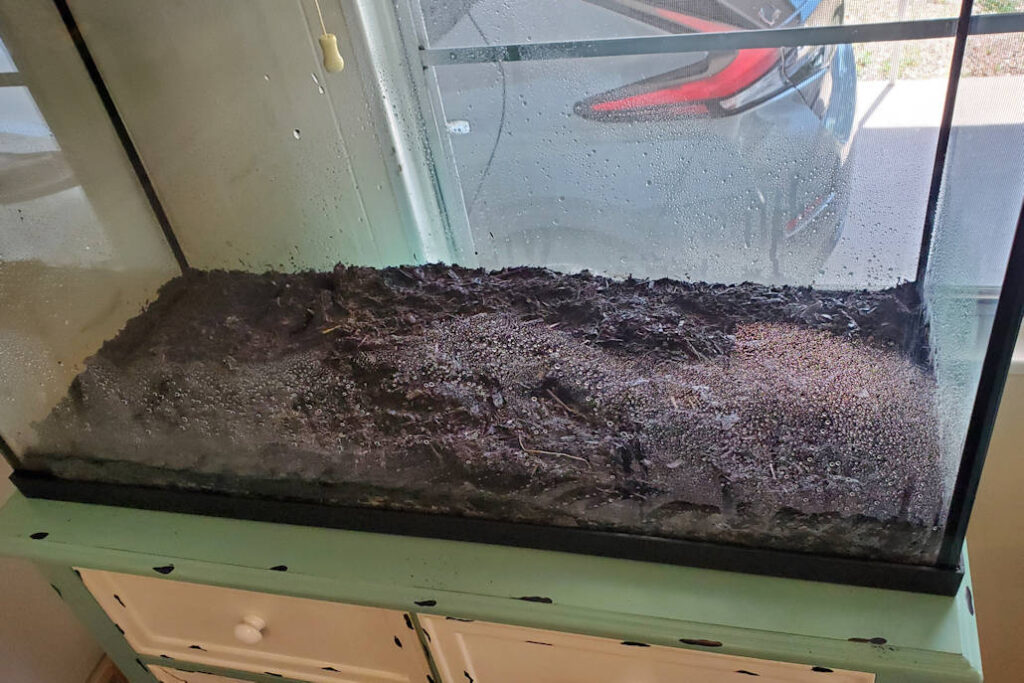
I put two inches of sand on top and pushed it down along the front glass with a wooden turner to hide the dirt.
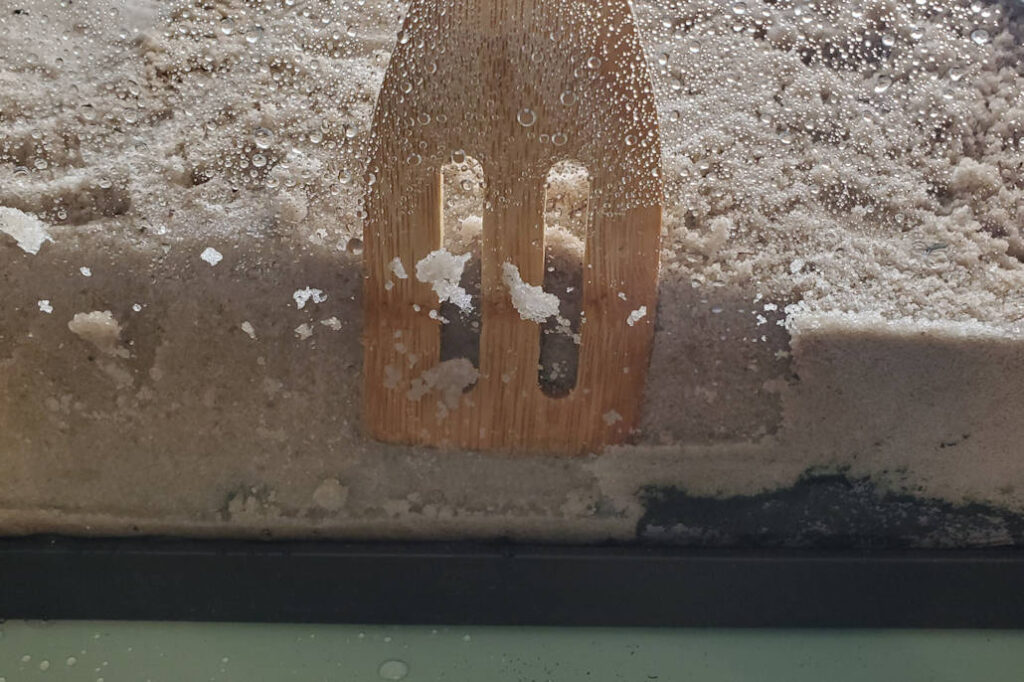
The next step was to add water, but it needed to be done carefully. If the pressure from the water exposed the dirt, there would be a big mess. I placed a paper bowl upside down and brought in my garden hose on the sprayer setting.
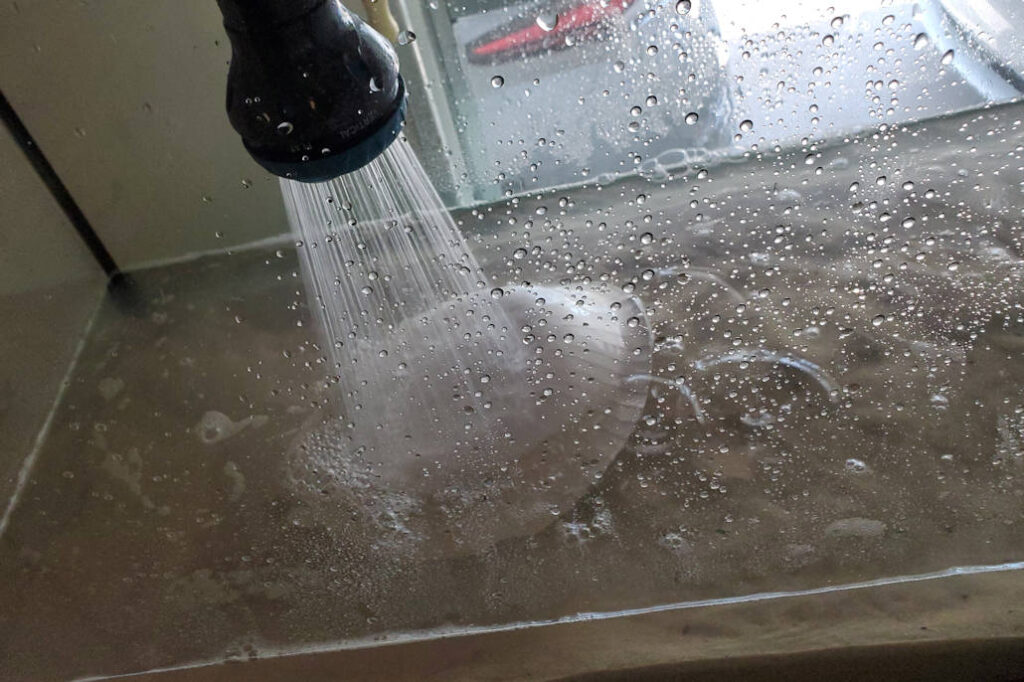
I used a paper bowl because I didn’t want to wash sand down my sink, but the bowl started floating, which complicated the filling a bit.
Once I had the tank filled, I added a small amount of Prime, a chemical designed to neutralize the chlorine in the water. After that, I added the plants I bought while I was at PetSmart. Later we bought six Tetra fish and added them to the tank.
I forgot an important step that I did the next morning. I went to a nearby creek and pulled a stick and a few leaves out of the water and added them to the tank. This was to introduce beneficial bacteria and microorganisms to the tank.


I bought a few more plants a couple of days later at Pet Supermarket, which had them for a fair amount less. As I write this Thursday evening the fish are still well and I will probably look for another type of fish to add to the tank within the next few days.

I will follow up in a couple of months to let you know how it is going.
